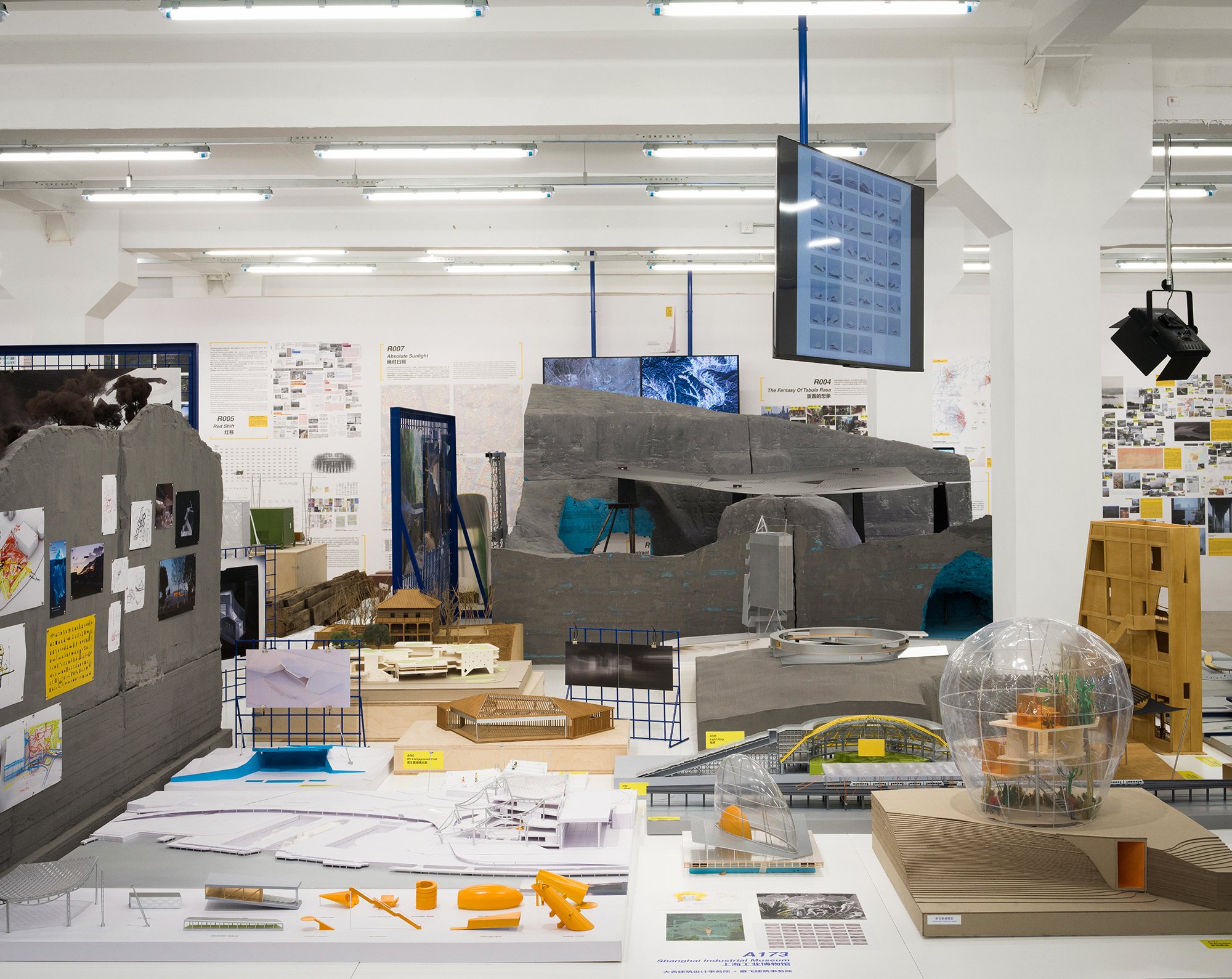
Focusing the Familiar:Yanfei Architects Selected Works 2012-2024
At the twilight of globalization, we unavoidably confront the anxieties that come with economic slowdown and potential decline. Over the past twelve years of practice, we have also observed a re-emergence of discussions within the architectural discipline, that prioritized economical issues.
In fact, Chinese architects have never escaped the orbit of economic necessity. It was marked by a sense of crisis—a fear of collapse—and a lasting trauma from the enduring impact of technology on China since modern times[1]. And the impact of this sense of crisis, profound as it has been, led us to embrace technology unconditionally today, especially in our great leap forward into the posthuman era. When we revisit the history of technology transfer in China under extreme conditions between 1950 and 1970, we see how modern building techniques were scaled up and adapted to the Chinese context, imbued with a unique perspective of economical efficacy. Ultimately, the traits from this technological transfer have seeped into the fabric of urban and rural China, shaping the super-banal landscape we witness today.
In this context, we require a new lens to examine the efficacy derived from economic challenges. Compared to the Western concept of “Amnistie pour l'existant (Amnesty for existing)”, advocated by Haus-Rucker[2], Roger T. Ames's interpretation of the Chinese classic, the Doctrine of the Mean, which is captured in the phrase “focusing the familiar affairs of the day”[3], offers a more vibrant alternative. It liberates itself from the burden of inscription, focusing instead on the immanence of transformations——paying attention to the present, deriving insights from generic situations, then leading to more dynamic and topological thinking and transforming the patterns of everyday living into practices.
This thinking about “focusing the familiar” informs the two polarities of our practices— embracing as much indeterminacy as possible while seeking an inner coherence. Sometimes, they also transform into each other, much like yin and yang, empty and full, motion and stillness. We may refer to them simply as embracing “contingency” and tending towards “consistency”.
On the one hand, the opportunities of informality (not to say the utter irregularity) of situations throw up a multitude of contingencies, dissolving the perception of China as a singular monopoly into a rich internal context. These contingencies have also catalyzed our patchwork of research and social snapshots, leading to a down-to-earth grasp of efficacy anchored in a low-tech, cost-effective, and make-do approaches. This economical approach is weak enough to yield to external contingencies, yet strong enough not to yield entirely all at once. On the other hand, the focus on economic efficacy within an established system of architectural production has been consistent, yet its trajectory has also undergone disjunctive leap-forward iterations. Within a relatively few decades, a variety of building standards emerged and created a layered and pluralistic situation. The framework is not a question of continuity of tradition but rather an issue of how economic efficiency can be recognized as a driver of projects. This yields a spectrum from the barest form to excess, and providing varying degrees of affordance to cope with the delayed specification of architectural program.
In the end, in terms of the 12 years of architectural practice that we review under the name of Yanfei Architects, economic efficacy may be the pivotal point that resists the crude portrayal of China as the other that marked the entry of contemporary Chinese architecture into international visibility. The resonance it triggers comes not only from the traumatic impacts of technological advancements but also from a new possibility for attuning the poetic to our quotidian life, thereby allowing Chinese architects and architects from elsewheres to be architectural contemporaries.
——SHUI Yanfei
日用中常:雁飞建筑事务所作品展 2012-2024
当身处全球化进程的尾声,我们不可避免的要学会承受逐步失速甚至衰退的所引起的一系列焦虑。在过去12年的实践中,我们发现有关经济性的讨论也重回视野。
事实上,或许我们从未逃离经济性的范畴,它的底色是一种危机感,更是近现代中技术对中国所造成持久的创伤,以至今天我们又是如此无条件的拥抱技术[1]。尤其是,当重新考察了中国在1950—1970年间极端情况下的建造历史时,我们观察到现代建造技术是如何规模化地嫁接上中国语境,并赋予它特殊的经济性考量。最终这些基因也渗透到当下中国的城市与乡村,造就了如今的超级平庸图景。
我们需要一个新的视角来看待经济性,以及它所引发的一系列效用。相比激进派拉克科的“宽恕现状”[2],或许安乐哲对于中庸的理解“日用中常”提供了一个更富生机的角度[3]。它没有形式的负担,而是关注一种内在的转化——把注意力放在当下,从那些普世的情况中来;调度出更动态和关系性的思考,庸常中见新意。
这种关系性的思考,也构成了这次展览的两极——尽可能的拥抱更多的不确定性,同时又谋求一种内在的延续,正所谓“机变”与“一贯”。
一方面,那些非设施化的营造物让我们触碰到更多的偶然性,消解了将中国作为某种单一个体的认知;取而代之是各种社会性切片以及一种经济便利的、凑合着来的策略,保持弹性但又不会完全屈从限制条件。另一方面,建制系统内对于经济性的关注始终一以贯之,同时它又经历了跳跃式迭代。不同的建设标准造成的较短时间堆积所形成的千层饼状态。经济性的架构在这里呈现了一种平庸到过度的光谱,提供了不同程度的堪用以应对功能的延迟到达。
最后,就这段探索而言,经济性或就是那个支点,足以抵御过去那些将中国作为他者的粗暴设定。它所引发的共鸣不仅来自于技术所引发的一系列创伤性的震荡,同时也意味着平凡中见新意的契机,从而也让我们达成与世界的共时。
——水雁飞
1.“Wenn der Kommunismus in China an die Herrschaft kommen sollte, steht zu vermuten, daß erst auf diesem Wege China für die Technik »frei« wird. Was liegt in diesem Vorgang?
Heidegger, M. (2015) IV. Abteilung: Hinweise und aufzeichnungen, Gesamtausgabe, pp.441
2.“庫:建築師本來就容易因基地上所遭遇的情况和阻礙而感到惱怒。重獲失物開展了另一種建築的可能性。這就是「郝斯-鲁克」(Haus-Rucker)團體所倡行的「寬恕現状」(Amnistie pour l'existant): 建築師向來懷抱著改變世界的庸俗抱負(當然是隱而不露又加以飾的),而过無異是種制衡力量。此種作法會带來複雜性,否則就會流於刻意虚假。”
《庫哈斯談庫哈斯——兩場對談及其他》,臺北:田園城市出版社2003年版,pp.40
3.“The most familiar – ‘The Doctrine of Mean’ – is, so we would claim, a most unfortunate rendering. We shall argue that a more comprehensive and coherent translation of the expression is captured in the phrase ‘focusing the familiar affairs of the day ( 中庸/日用中常 ).’ It is an attempt to optimize the creative possibilities of the human community, and to transform the patterns of everyday living into profoundly socioreligious practices. ”
Ames, R. and Hall, D. (2001)Focusing the Familiar, pp.43




















